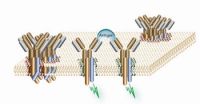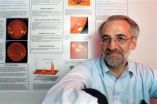(Press-News.org) Air pollution has already been linked to a range of health problems. Now, a ground-breaking new study suggests pollution from traffic may put women at risk for another deadly disease. The study, published in the prestigious journal Environmental Health Perspectives, by researchers from The Research Institute of the MUHC (RI MUHC; Dr. Mark Goldberg), McGill University (Drs. Goldberg, Dan Crouse and Nancy Ross), and Université de Montréal (Dr. France Labrèche), links the risk of breast cancer – the second leading cause of death from cancer in women – to traffic-related air pollution.
"We've been watching breast cancer rates go up for some time, "says study co-author Dr. Mark Goldberg, a researcher at The RI MUHC. "Nobody really knows why, and only about one third of cases are attributable to known risk factors. Since no-one had studied the connection between air pollution and breast cancer using detailed air pollution maps, we decided to investigate it."
Dr. Goldberg and his colleagues approached the problem by combining data from several studies. First, they used the results of their 2005-2006 study to create two air pollution "maps" showing levels of nitrogen dioxide (NO2), a by-product of vehicular traffic, in different parts of Montreal in 1996 and 10 years earlier in 1986.
Then, they charted the home addresses of women diagnosed with breast cancer in a 1996-97 study onto the air pollution maps. Their findings were startling. The incidence of breast cancer was clearly higher in areas with higher levels of air pollution.
"We found a link between post-menopausal breast cancer and exposure to nitrogen dioxide (NO2), which is a 'marker' for traffic-related air pollution", says Dr. Goldberg. "Across Montreal, levels of NO2 varied between 5 ppb to over 30 ppb. We found that risk increased by about 25 per cent with every increase of NO2 of five parts per billion. Another way of saying this is that women living in the areas with the highest levels of pollution were almost twice as likely to develop breast cancer as those living in the least polluted areas."
These disturbing results must be interpreted with great caution, warns Dr. Goldberg. "First of all, this doesn't mean NO2 causes breast cancer," he explains. "This gas is not the only pollutant created by cars and trucks, but where it is present, so are the other gases, particles and compounds we associate with traffic – some of which are known carcinogens. NO2 is only a marker, not the actual carcinogenic agent."
A study of this kind can be subject to unknown errors. While the researchers tried to account as much as possible for them, areas of uncertainty remain. "For example, we don't know how much the women in the study were exposed to pollution while at home or at work, because that would depend on their daily patterns of activity, how much time they spend outdoors and so on," says Dr. Goldberg.
Dr. Labrèche adds "Some studies published in the US have also shown possible links between cancer and air pollution. At the moment, we are not in a position to say with assurance that air pollution causes breast cancer. However, we can say that the possible link merits serious investigation. From a public health standpoint, this possible link also argues for actions aimed at reducing traffic-related air pollution in residential areas."
###
About the study
The study was a collaborative effort by researchers from the Research Institute of the MUHC, McGill University and Université de Montreal. It was funded by a research grant from the Canadian Cancer Society and another one from the Canadian Institutes of Health Research (CIHR).
About the McGill University Health Centre (MUHC) One of the world's foremost academic health centres, the MUHC offers exceptional and integrated patient-centric care, research and teaching. Highly committed to the continuum of care in its community and affiliated with the Faculty of Medicine of McGill University, The Montreal Children's Hospital, the Montreal General Hospital, the Royal Victoria Hospital, the Montreal Neurological Hospital, the Montreal Chest Institute and the Lachine Hospital of the MUHC value multidisciplinary service throughout the lifespan, innovative technologies and practices, strategic partnerships and leadership in knowledge transfer. The MUHC is currently carrying out a $2.25-billion Redevelopment Project on three campuses—the Mountain, the Glen and Lachine—designed to provide healthcare professionals with an effective environment in which to ensure patients and their families benefit from The Best Care for Life. The campuses are also anchored in best sustainable-development practices, including LEED® and BOMA BESt guidelines.
www.muhc.ca www.muhc.ca/construction
The Research Institute of the McGill University Health Centre (RI MUHC) is a world-renowned biomedical and health-care hospital research centre. Research is organized by eleven research axes (or programs). Located in Montreal, Quebec, Canada, the Institute is the research arm of the McGill University Health Centre affiliated with the Faculty of Medicine at McGill University. The Institute supports over 600 researchers, 1,000 graduate students, post-docs and fellows devoted to a broad spectrum of fundamental and clinical research. Over 1000 clinical research studies are conducted within our hospitals each year. The Research Institute of the MUHC is supported in part by the Fonds de la recherche en santé du Québec (FRSQ).
www.muhc.ca/research/
About McGill University
McGill University, founded in Montreal, Que., in 1821, is Canada's leading post-secondary institution. It has two campuses, 11 faculties, 10 professional schools, 300 programs of study and more than 35,000 students. McGill attracts students from more than 150 countries around the world. Almost half of McGill students claim a first language other than English – including 6,200 francophones – with more than 6,800 international students making up almost 20 per cent of the student body.
www.mcgill.ca
About the Université de Montréal
Deeply rooted in Montreal and dedicated to its international mission, the Université de Montréal is one of the top universities in the French-speaking world. Founded in 1878, the Université de Montréal today has 16 faculties and together with its two affiliated schools, HEC Montréal and École Polytechnique, constitutes the largest centre of higher education and research in Québec, the second largest in Canada, and one of the major centres in North America. It brings together 2,500 professors and researchers, accommodates more than 56,000 students, offers some 650 programs at all academic levels, and awards about 3,000 masters and doctorate diplomas each year.
www.umontreal.ca
VTT printed the paper with antibodies that react to the sample. The test result can be read in the form of a line, for example, which either does or does not appear depending on the sample – just like in the pregnancy tests already familiar to consumers. It is also possible to print instructional images or text, for example, either on or alongside the test.
Printed paper test can be used to test quickly and easily for the presence of a given substance. The test can be adapted to different purposes by exchanging the identifying antibody printed on the paper for another, ...
CHAPEL HILL – A clinical trial designed to replace the genetic defect causing the most common form of muscular dystrophy has uncovered an unexpected aspect of the disease. The trial, based on therapy designed by scientists at the University of North Carolina at Chapel Hill School of Medicine, showed that some patients mount an immune response to the dystrophin protein even before they have received the gene therapy.
The puzzling results, which came from trials at Columbus Children's Hospital in Ohio, suggest that the immune systems of a number of patients -- once thought ...
Insecure Web browsers and the growing number of complex applets and browser plug-in applications are allowing malicious software to spread faster than ever on the Internet. Some websites are installing malicious code, such as spyware, on computers without the user's knowledge or consent.
These so-called "drive-by downloads" signal a shift away from using spam and malicious e-mail attachments to infect computers. Approximately 560,000 websites -- and 5.5 million Web pages on those sites -- were infected with malware during the fourth quarter of 2009.
A new tool that ...
It's an experience shared by everyone: You run into someone you know, but his or her name escapes you.
Now, Temple psychologist Ingrid Olson has found a way to improve the recall of proper names.
Olson dedicates her research to understanding human memory. In a recent study, she found that electric stimulation of the right anterior temporal lobe of the brain improved the recall of proper names in young adults by 11 percent. Her study appears this month in the journal Neuropsychologia.
"We know a lot about how to make people's memory worse, but we don't know very ...
Fish byproducts may be a new source of fish feed, thanks to research by U.S. Department of Agriculture (USDA)-funded scientists in Hawaii.
Research scientist Dong-Fang Deng and her colleagues with the Oceanic Institute in Waimanalo, Hawaii, are collaborating with USDA food technologist Peter Bechtel to develop the new fish feeds. Bechtel is with the USDA Agricultural Research Service (ARS) Subarctic Agricultural Research Unit in Kodiak, Alaska. ARS is the USDA's principal intramural scientific research agency.
The scientists are taking fish parts that would normally ...
In order to track down pathogens and render them harmless, the immune system must be able to recognize myriad different foreign substances and react to them. Scientists at the Max Planck Institute of Immunobiology and the Centre for Biological Signalling Studies BIOSS at the University of Freiburg have discovered how the immune system's B-cells can be activated by numerous substances from our environment. The receptor molecules on the surface of the B-cells are only activated when the receptor subunits separate following the binding of foreign substances. These findings ...
A $5 million National Science Foundation (NSF) grant to upgrade and expand a set of radio frequency antennas at Owens Valley Solar Array (OVSA) http://www.ovsa.njit.edu/ has been awarded to NJIT. The new facility is expected to help scientists better understand the nature of solar flares which greatly interest government, industry and the military.
"Space weather incidents such as coronal mass ejections and solar flares can cause problems with cell phone reception, GPS systems, power grids and other technologies," said NJIT Distinguished Professor Dale Gary, a world-renowned ...
Chevy Chase, MD— A new consensus statement published in the September, 2010, issue of The Endocrine Society's Journal of Clinical Endocrinology & Metabolism (JCEM) finds that the increasing recognition that beta-cell failure occurs much earlier and severely than commonly believed suggests that regular glycemia screening, early identification of patients at metabolic risk and prompt and aggressive intervention deserves greater emphasis.
The consensus statement is based on the findings of a working group of basic researchers, clinical endocrinologists and primary care ...
BETHESDA, Md., Oct. 6, 2010 – Massachusetts General Hospital researchers say they have determined how iron contributes to the production of brain-destroying plaques found in Alzheimer's patients.
The team, whose study results appear in this week's Journal of Biological Chemistry, report that there is a very close link between elevated levels of iron in the brain and the enhanced production of the amyloid precursor protein, which in Alzheimer's disease breaks down into a peptide that makes up the destructive plaques.
Dr. Jack T. Rogers, the head of the hospital's neurochemistry ...
CHAMPAIGN, Ill. — With bits of DNA extracted from century-old museum specimens, researchers have found a place for the extinct passenger pigeon in the family tree of pigeons and doves, identifying for the first time this unique bird's closest living avian relatives.
The new analysis, which appears this month in Molecular Phylogenetics and Evolution, reveals that the passenger pigeon was most closely related to other North and South American pigeons, and not to the mourning dove, as was once suspected.
Naturalists have long lamented that one of North America's most ...




